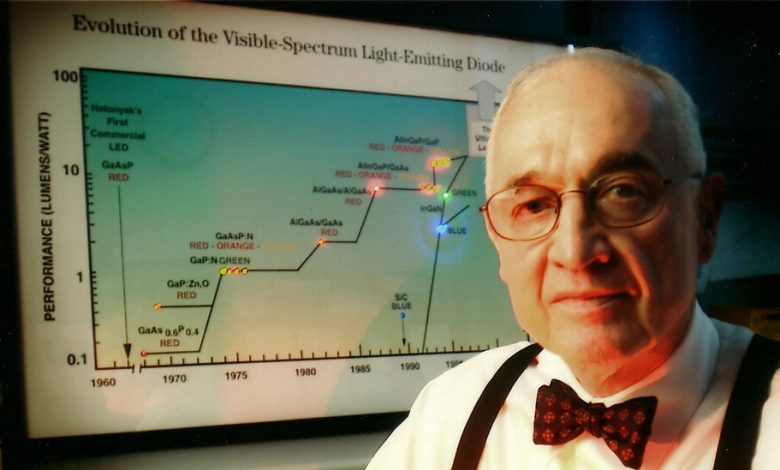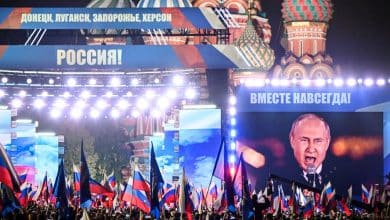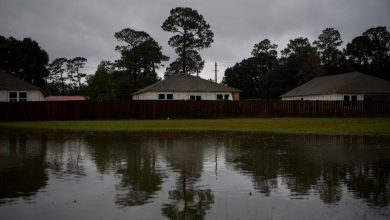Nick Holonyak Jr., Pioneer of LED Lighting, Is Dead at 93

Nick Holonyak Jr., an electrical engineer who became known as the godfather of the LED lighting that illuminates flat-screen TVs and laptop computers, and who also developed lasers that enabled DVD and CD players, bar code scanners and medical diagnostic devices, died on Sept. 18 in Urbana, Ill. He was 93.
His death, at a nursing home, was announced by the University of Illinois Urbana-Champaign, his alma mater, where he taught from 1963 until he retired in 2013. The day after he died, the campus’s State Farm Center arena was bathed in red to commemorate his invention of the first visible light-emitting diode in 1962.
Professor Holonyak (pronounced huh-LON-yak) was among the first scientists to predict that incandescent bulbs, which heat metal filaments to create energy, and fluorescent lamps, which use ionized gas, would eventually be replaced by LEDs, semiconductor chips the size of a grain of sand that emit photons of light when electric current is applied to them.
Professor Holonyak described the LED as the “ultimate lamp” because, he said, “the current itself is the light.”
LEDs radiate less heat than incandescent bulbs, consume less energy and last longer. They are also environmentally safer than fluorescent lamps, which contain mercury. The Department of Energy has estimated that by the end of the decade, LEDs will account for more than 80 percent of all lighting purchases and will pare Americans’ electric bills by some $30 billion annually.
“Not only did Nick Holonyak invent the first visible LED; he predicted right from the start that the LED would eventually replace all other forms of electric lighting, which it is well on the way to doing,” said Bob Johnstone, a technology journalist and the author of “L.E.D.: A History of the Future of Lighting” (2017).
But in 2014, two other scientists, Hiroshi Amano of Japan and Shuji Nakamura of the University of California, Santa Barbara, won the Nobel Prize in Physics for their successful development in 1993 of a high-brightness blue-light-emitting diode, which was needed to blend with red and green to create white illumination and produce a spectrum of other colors. (Professor Holonyak’s early invention of a diode that emitted red light explains why displays on alarm clocks and calculators were red — and only red — for a long time.)
“Beyond question Holonyak was a pioneer, visionary and a great scientist-educator,” Mr. Johnstone said in an email. “It was a travesty of justice that he did not share in the Nobel, which has everything to do with the narrow criteria by which the prize is awarded (the committee likes to restrict winners to a single discovery) and nothing to do with the indisputable magnitude of his achievement.”
Russell D. Dupuis, director of the Center for Compound Semiconductors at the Georgia Institute of Technology, said that Professor Holonyak was passed over for the physics Nobel Prize twice — not just in 2014 but also in 2000 — although in both cases “the fundamental material contributions were made by Holonyak.”
The German American Herbert Kroemer and the Russian Zhores I. Alferov, collaborators of Professor Holonyak’s, shared in the 2000 prize for discovering semiconductor and low-energy laser technology, which was quickly applied to practical uses like cellphones, fiber optics, CD players and bar code readers.
“Nick Holonyak is a national treasure,” Mary Beth Gotti, manager of the General Electric Lighting & Electrical Institute, said in 2012 on the 50th anniversary of Professor Holonyak’s discovery. “His curiosity and drive to explore and invent have inspired thousands of students and countless innovations.”
Professor Holonyak was born on Nov. 3, 1928, in Zeigler, Ill., to Nick Holonyak Sr. and Anna (Rosoha) Holonyak, immigrants from what is now Western Ukraine. His father, was a coal miner.
Nick Jr., the first in his family to receive a formal education, became fixated on electricity when he helped his godfather repair the spark coils on his Model T Ford. At 15, he went to work laying ties for the Illinois Central Railroad, but he abandoned manual labor after one 30-hour stint repairing flood damage.
“The cheap and reliable semiconductor lasers critical to DVD players, bar code readers and scores of other devices owe their existence in some small way to the demanding workload thrust upon downstate railroad crews decades ago,” Professor Holonyak told The Chicago Tribune in 2003.
As a freshman at the University of Illinois extension campus in Granite City, he declined an instructor’s invitation to switch to chemistry from electrical engineering.
“I told him that chemistry was too much like cookbook learning, too many recipes to learn, and I was more interested in electrical science,” he was quoted as saying by Laura Schmitt in “The Bright Stuff: The LED and Nick Holonyak’s Fantastic Trail of Innovation” (2012).
He earned his bachelor’s, master’s and doctoral degrees in electrical engineering from the University of Illinois Urbana-Champaign in 1950, 1951 and 1954. He was the first graduate student of John Bardeen, who went on to win the Nobel Prize in Physics twice.
Professor Holonyak married Katherine Jerger in 1955. She is his only immediate survivor. He completed his military service with the Army Signal Corps in Japan in 1957.
From 1957 to 1963, he conducted research at General Electric’s Advanced Semiconductor Laboratory in Syracuse, N.Y. It was there that he created the gallium arsenide phosphide crystals that emitted a visible red light.
“It’s a good thing I was an engineer and not a chemist,” he said in an interview with General Electric in 2012. “When I went to show them my LED, all the chemists at G.E. said, ‘You can’t do that. If you were a chemist, you’d know that wouldn’t work.’ I said, ‘Well, I just did it, and see, it works!’”
He returned to the University of Illinois in 1963 and had a professorship there endowed in the name of Professor Bardeen, his doctoral adviser. Professor Holonyak and Milton Feng ran a transistor laser research center at the university.
He held 41 patents and won many awards for engineering and technology, including the Global Energy Prize, the National Medals of both Science and Technology, and the Draper Prize, from the National Academy of Engineering.
He worked side by side with graduate students in a windowless office and lab, shunning computers and calculators and parrying the theoretical abstractions that often dominate the world of physics. Instead, he tinkered with practical solutions to everyday challenges.
“I didn’t take a sabbatical,” he told Moira Gunn, the host of NPR’s “Tech Nation,” in 2012, “because I’m living in the playground where I go to play — to play with an idea and see if I can make something.”
Craig Mellow contributed reporting.




